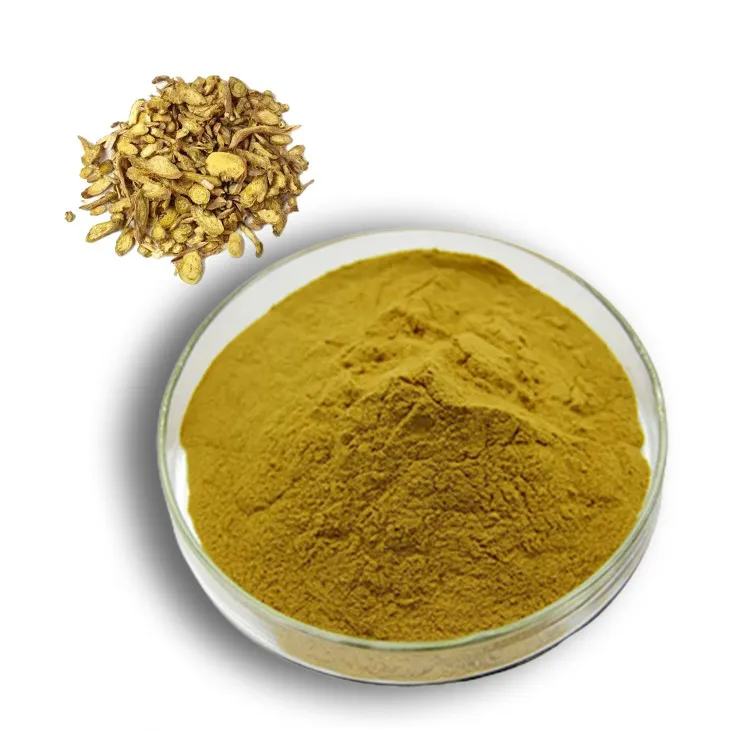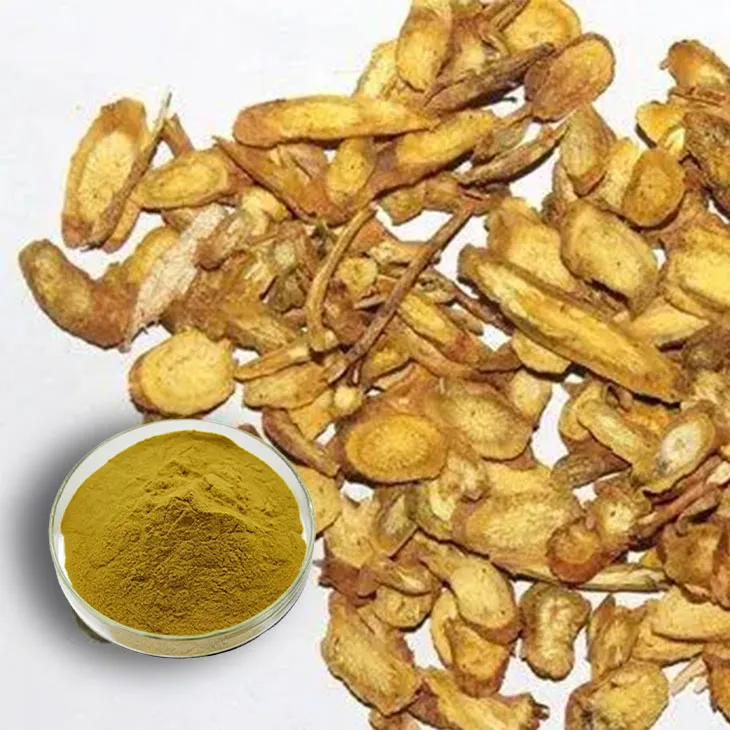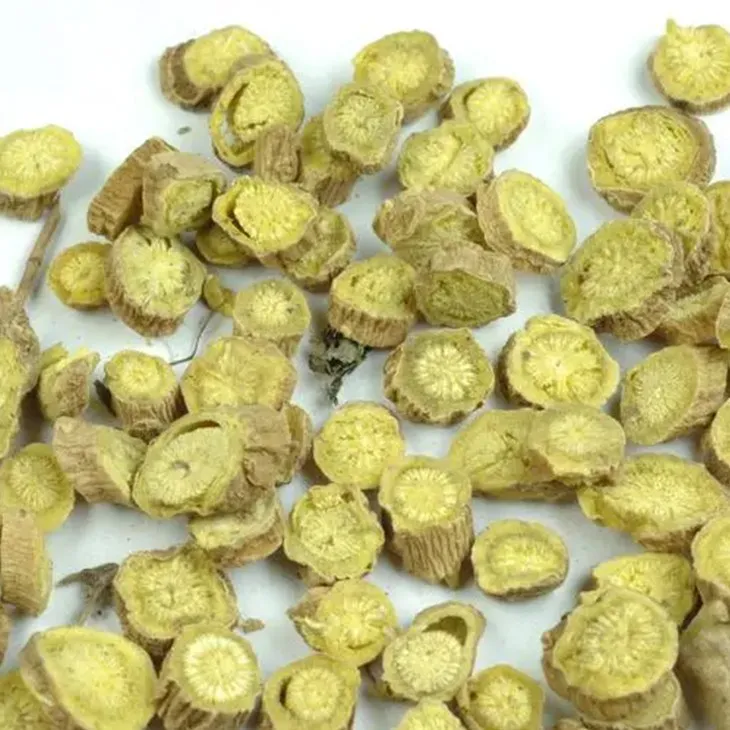- 0086-571-85302990
- sales@greenskybio.com
Clinical Insights: Baicalin's Therapeutic Potential and Applications
2024-07-04

1. Introduction
Baicalin, a flavonoid compound, is obtained from Scutellaria baicalensis Georgi. In recent years, it has attracted significant attention in the field of medicine due to its promising therapeutic potential. This compound has been the subject of numerous studies exploring its various pharmacological properties and applications in treating different diseases.

2. Pharmacological Properties of Baicalin
2.1 Anti - inflammatory Activity
Baicalin exhibits strong anti - inflammatory properties. It can inhibit the production of pro - inflammatory cytokines such as interleukin - 1β (IL - 1β), interleukin - 6 (IL - 6), and tumor necrosis factor - α (TNF - α). The mechanism underlying this activity is related to its ability to regulate key signaling pathways involved in inflammation, for example, the nuclear factor - κB (NF - κB) pathway. By suppressing the activation of NF - κB, baicalin can prevent the transcription of genes encoding pro - inflammatory factors.
2.2 Antioxidant Activity
Another important property of baicalin is its antioxidant activity. It can scavenge free radicals such as superoxide anions and hydroxyl radicals. This antioxidant effect is crucial in protecting cells from oxidative stress, which is associated with various diseases including cancer, neurodegenerative disorders, and cardiovascular diseases. Baicalin can also enhance the activity of endogenous antioxidant enzymes such as superoxide dismutase (SOD) and glutathione peroxidase (GSH - Px).
2.3 Antiviral Activity
Baicalin has shown antiviral potential against a variety of viruses. For instance, it has been reported to have activity against influenza viruses. The antiviral mechanism may involve interfering with the virus - cell attachment and entry process, as well as inhibiting viral replication within the host cells. Baicalin can also modulate the host immune response to enhance antiviral defense.
2.4 Anticancer Activity
There is growing evidence supporting the anticancer activity of baicalin. It can induce apoptosis in cancer cells, which is a programmed cell death process. Baicalin can also inhibit cancer cell proliferation by interfering with cell cycle progression. Moreover, it has the potential to suppress tumor angiogenesis, which is the formation of new blood vessels that tumors need for growth and metastasis.

3. Mechanisms of Action at the Molecular Level
At the molecular level, baicalin interacts with several key cellular targets. One of the main targets is proteins involved in signal transduction pathways. For example, as mentioned earlier, it can interact with components of the NF - κB pathway to regulate gene expression. Baicalin can also bind to specific receptors on the cell surface, thereby triggering intracellular signaling cascades that lead to its pharmacological effects.
Furthermore, baicalin may influence the expression of microRNAs (miRNAs). miRNAs are small non - coding RNAs that play important roles in post - transcriptional regulation of gene expression. By modulating miRNA expression, baicalin can affect the levels of target mRNAs and subsequently the proteins encoded by these mRNAs.

4. Applications in Treating Various Diseases
4.1 Respiratory Infections
Baicalin has been investigated for its potential in treating respiratory infections. In the case of influenza, its antiviral activity can help to reduce viral load and alleviate symptoms. Additionally, its anti - inflammatory properties can prevent excessive inflammation in the respiratory tract, which is often a major contributor to the severity of respiratory infections.
- It can also be effective against other respiratory pathogens such as respiratory syncytial virus (RSV).
- Baicalin may help in reducing cough, fever, and shortness of breath associated with respiratory infections.
4.2 Neurodegenerative Disorders
In neurodegenerative disorders such as Alzheimer's disease (AD) and Parkinson's disease (PD), oxidative stress and inflammation play significant roles. Baicalin's antioxidant and anti - inflammatory properties make it a potential candidate for treatment. In AD, it may help to reduce the accumulation of amyloid - β plaques and tau tangles, which are characteristic pathological features. In PD, baicalin could potentially protect dopaminergic neurons from oxidative damage and inflammation - induced degeneration.
- It may also modulate neurotransmitter levels in the brain, which are often disrupted in neurodegenerative disorders.
4.3 Liver Diseases
For liver diseases, baicalin has shown beneficial effects. In hepatitis, it can suppress liver inflammation and reduce liver cell damage. Baicalin may also have a role in preventing liver fibrosis, which is the excessive deposition of extracellular matrix proteins in the liver. In addition, it can protect the liver from oxidative damage caused by toxins or drugs.
- It has the potential to improve liver function parameters such as alanine aminotransferase (ALT) and aspartate aminotransferase (AST) levels.

5. Current Research and Future Perspectives
Current research on baicalin is expanding rapidly. There are ongoing clinical trials to evaluate its efficacy and safety in treating various diseases. However, there are still some challenges that need to be addressed. For example, the bioavailability of baicalin needs to be improved to enhance its therapeutic effects. Scientists are exploring different drug delivery systems such as nanoparticles to overcome this issue.
In the future, more in - depth studies are expected to further elucidate the mechanisms of action of baicalin. This will help in the development of more targeted therapies. Additionally, combination therapies involving baicalin and other drugs may be explored to enhance treatment outcomes. There is also a need to investigate the long - term effects of baicalin treatment in different patient populations.
FAQ:
What are the main pharmacological properties of baicalin?
Baicalin has several main pharmacological properties. It is anti - inflammatory, which means it can help reduce inflammation in the body. It also has antioxidant properties, protecting cells from oxidative damage. Additionally, it shows antiviral and anticancer activities, making it a compound with diverse potential therapeutic effects.
How does baicalin work at the molecular level?
At the molecular level, baicalin interacts with key cellular targets. For example, it may affect certain signaling pathways related to inflammation, antioxidant defense, viral replication, and cancer cell growth. These interactions can lead to modulation of cellular functions and ultimately result in its observed pharmacological effects.
Can baicalin be used to treat respiratory infections? If so, how?
Yes, baicalin can be used to treat respiratory infections. It may work by reducing inflammation in the respiratory tract, which is often a key aspect of respiratory infections. It might also have antiviral properties that can help combat the viruses causing the infections, although the exact mechanisms in the context of respiratory infections are still being investigated.
What is the role of baicalin in treating neurodegenerative disorders?
Baicalin may play a role in treating neurodegenerative disorders. In neurodegenerative conditions, there are often processes such as oxidative stress and inflammation. Baicalin's antioxidant and anti - inflammatory properties can potentially help protect neurons from damage and slow down the progression of these disorders.
How is baicalin involved in treating liver diseases?
Baicalin is involved in treating liver diseases in several ways. It can help reduce inflammation in the liver, which is common in many liver diseases. Its antioxidant properties may also protect liver cells from damage caused by free radicals. Additionally, it may modulate certain liver - related metabolic processes to promote liver health.
Related literature
- The Therapeutic Potential of Baicalin in Inflammatory Diseases"
- "Baicalin: A Promising Antiviral Agent"
- "Baicalin and Neuroprotection: Current Understanding"
- "The Role of Baicalin in Liver Health and Disease"
- ▶ Hesperidin
- ▶ citrus bioflavonoids
- ▶ plant extract
- ▶ lycopene
- ▶ Diosmin
- ▶ Grape seed extract
- ▶ Sea buckthorn Juice Powder
- ▶ Beetroot powder
- ▶ Hops Extract
- ▶ Artichoke Extract
- ▶ Reishi mushroom extract
- ▶ Astaxanthin
- ▶ Green Tea Extract
- ▶ Curcumin Extract
- ▶ Horse Chestnut Extract
- ▶ Other Problems
- ▶ Boswellia Serrata Extract
- ▶ Resveratrol Extract
- ▶ Marigold Extract
- ▶ Grape Leaf Extract
- ▶ blog3
- ▶ Aminolevulinic acid
- ▶ Cranberry Extract
- ▶ Red Yeast Rice
- ▶ Red Wine Extract
-
Rosemary extract
2024-07-04
-
Tongkat Ali Extract
2024-07-04
-
Konjac Powder
2024-07-04
-
Peppermint Extract Powder
2024-07-04
-
Natural grape seed extract
2024-07-04
-
Lavender Extract
2024-07-04
-
Calendula Extract
2024-07-04
-
Panax Ginseng Leaf Extract
2024-07-04
-
Acerola Extract
2024-07-04
-
Curcuma Longa Extract
2024-07-04





















